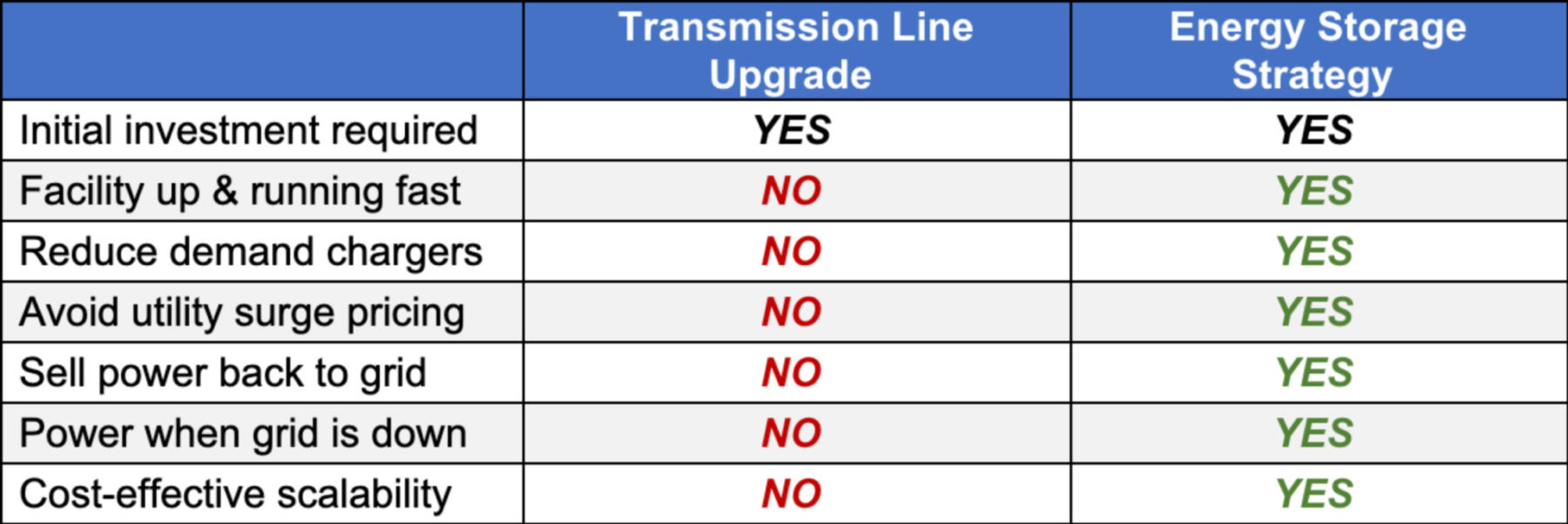The production of electric vehicles (EVs) is expected to rise sharply due to a combination of global public policy pressure, climate concerns, and rising gas prices. Bloomberg estimates that by 2025, plug-in EVs will make up 23% of new passenger vehicles, rising from $6.6 million in sales to $20.6 million.
Although EV adoption rates will vary by country, EV charging stations are expected to spring up just as gas stations did in the 20th century. It’s unknown how quickly the grid will adapt to this dramatic increase in need for electricity for EV charging stations, but it’s clear that energy storage technologies hold great potential for solving this problem—and increasing profitability for EV charging station owners.

Energy storage is a smart strategy for increasing both the production and the profitability of EV charging stations, but there are several factors that should be considered before implementation.
The grid doesn’t directly support charging station operations
DC fast chargers need large amounts of energy to quickly charge EVs. The faster they charge, the happier the customer—thereby increasing the viability of EVs over gas engines. Unfortunately, today’s electric grid can’t support the surge in electricity that EV charging stations require.
When it comes to setting up the power electronics for a charging station, there are two choices:
- Upgrade the transmission lines to the facility (EV charging location)
- Implement a battery storage strategy to act as a buffer between the transmission lines and the facility
Upgrading the transmission lines to the facility can be both costly and time-consuming, slowing down the process to become a fully operational station. Furthermore, overhead costs (like the utility company bills) can be both high and unpredictable.
The required surges in power will drive up costs more than normal because of the added stress on the grid. Depending on the power demand on the rest of the grid, these charges can be hard to predict and will vary based on availability. For instance, hot summers will draw a lot of power across the grid, driving costs up.
Creating an energy storage strategy puts batteries between the grid and the chargers, preventing asset owners from having to upgrade the transmission lines around the facility. This allows for stations to manage the power surges while charging vehicles without pulling on the grid and receiving upcharges to the facility.
How to capitalize on investing in your energy storage strategy
While there are costs associated with both upgrading the transmission lines to the facility and creating an energy storage strategy, only one of these options creates both cost-effective benefits and additional revenue:

Building smarter power stations with a single rectifier
Another strategy to consider when building the most productive and efficient EV-charging stations is to centralize all of the chargers to a single rectifier. Combined with the right energy storage strategy, a single rectifier will further maximize the scalability if planning multiple EV charging locations.
Some charging facilities will have standalone charging stations for each parking spot, meaning there’s a rectifier (power modulating brain) at each station. This is an expensive strategy because each spot would carry a high investment.
With a centralized rectifier, there is only one ‘power modulating brain’ that controls all of the charging stations at the facility.
Leverage energy storage as your competitive edge
To create the most productive strategy for your approach to EV-charging stations, it pays to understand the various paths to get a facility up and running.
While any EV charging station requires a capital investment, one strategic route provides you with additional revenue streams, while the other does not.
As you evaluate your options, consider a power electronics company that builds your long-term strategy with you to ensure peak profitability from each facility.